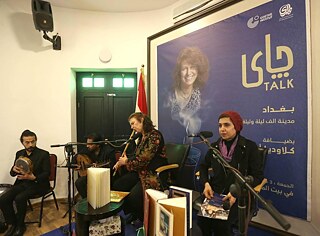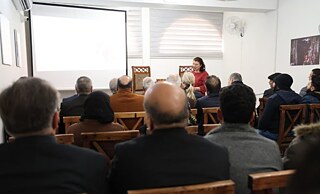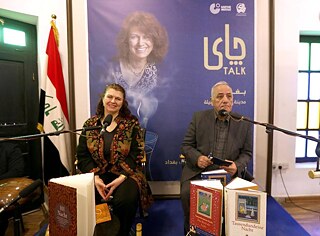Bridging Space and Time – A Conversation with Translator Claudia Ott

A sunny day in March: Claudia Ott extends an invitation to her 18-century courtyard house in Lower Saxony for a talk on Arabic translation, on her recent visit to Iraq, and, of course, one of her passions that combines both: the tales of 1001 Nights.

Claudia Ott, a musician and Arabic scholar, stands among the foremost translators from Arabic to German. Her multi-volume retranslation One Thousand and One Nights is based on the oldest surviving manuscripts of these stories. The first volume, published in 2004 by C.H. Beck publishing house, was followed by Das glückliche Ende (The Happy End; 2016) and Das Buch der Liebe (The Book of Love; 2022), with two more volumes currently underway. Adding to her legacy, Ott’s publication 101 Nacht, released in 2012, surprised audiences with its revelation and translation of previously undiscovered stories from the expansive universe of 1001 Nights.


Ott emphasises that this could of course not be reconciled with historic reality: “The character of Caliph Harun ar-Rashid, in particular, is fictional.” And even though today’s Baghdad differed considerably from the Baghdad depicted in 1001 Nights, the observant visitor could discern numerous echoes of its world. These include oversized statues portraying Shahrazad and Shahriyar, the protagonists of the overarching tale, representations of the flying carpet, a park inspired by 1001 Nights, quaint pavilions along the Tigris, each named after specific stories, as well as vestiges of architectural elements spanning the centuries. The remnants of a wall on the Tigris bank, for instance, endures as a reminder of the canal on which one of the caliph’s concubines is smuggled out of the palace, concealed in a crate of goods. These references made the connection to 1001 Nights so tangible within the city: “Baghdad is the only Arab city so explicitly and so prominently committed to the cultural heritage of 1001 Nights”, says Ott.

The main purpose of 1001 Nights, Ott stresses, is to entertain. These tales were by no means meant as historical records, but still offer insights into that era’s realities. The fictional content of the overall quite heterogenous stories differed considerably, she says, and each story required individual scrutiny. While there were stories that take place under water or in the air, others could strike a much more realistic tone, with the caliph walking down a specific lane in Baghdad.


For her reading session at Baghdad’s Mutanabbi Street, where literature enthusiasts meet most Fridays to read, discuss, and exchange ideas, Ott selected two stories set in Baghdad, one from 1001 Nights and one from 101 Nights. Presenting the texts in Arabic from the centuries-old original manuscripts, Ott projected them onto a screen for the audience’s benefit. This gesture was well-received by colleagues from Baghdad attending the lecture, who were able to follow the sources in real time. A special moment for everyone: Through direct interaction between storyteller Ott and her audience, accompanied by music on the Nay played by herself, alongside oud player Mustafa Salihi and percussionist Hussein al-Harbi, the oral storytelling tradition of the tales in their original context became tangible, bridging not only Germany and Iraq but also simultaneously the past and present.